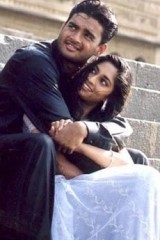
MAPPING THE COLOR PALETTE
Oscar Wilde had said that "Mere color, unspoiled by meaning, and unallied with definite form, can speak to the soul in a thousand different ways." Color in cinema beyond the technical and aesthetic specifications communicates a language of its own & is capable of visually representing emotions, characteristics, locales, seasons and values depending on the cultural context in which it is used. From the days of black and white films to a progression of Technicolor, then Kodak-Eastman color to today's Digital capturing of colors and subsequent color correction via post production techniques, cinema has been the canvas to document life's ubiquitous colors in motion. Color is constant and silently surrounds our everyday lives so much that we sometimes take it for granted. But it tends to be a great influencer and signifier of the things that we wear, buy, eat and perceive various facets of life. Lucky color shirt for your job interview, lucky shade to paint your room as per Feng Shui, auspicious color for the bridal saree, suitable color for an eco-friendly brand's logo, appropriate color for a funeral, pastel hues for the new-born's wardrobe, black color nail polish emanating a daring trait of the wearer and every other occasion where color plays a dominant role at a tangible or emotional / psychological level. And it extends to the world of film-making too smearing a powerful cinematic code and a tool to convey multiple messages.
If we observe the films painted from the Hollywood factory, the genre of the film decides the predominant color of the frames, the costumes, locations and overall look and feel of the film. War-based or period subjects in films like Troy, Gladiator and Braveheart for instance stick to hues of browns, greys and fiery shades of sunset yellow. Romantic films have a hint of passionate colors either in props like flowers, hats, coats or in the costumes of the leading lady symbolizing love with red, pink or mauve. Pan the canvas to our very own Tamizh cinema and you have color-co-ordinated films like Paruthiveeran, Veyil and Poo that have used more of natural lighting to bring out the rural milieu in myriad shades of brown, crimson orange and golden yellow as dominant colors to match the subject of the respective films.
The other aspect where color plays a significant role is in the display of emotions by a certain character of the film and the sentiments that the movie world attaches itself to specific colors. Yash Chopra always introduces his heroines in white colored costumes and director duo Abbas Mustan is spotted in their trademark white shirt, white pant and white shoes (!) during public appearances. A whole song 'Pachai Niramey' was poetically written in the Tamizh film 'Alaipayuthey' when Madhavan elaborates every nuance of his lady love's beauty, as played by Shalini, by comparing the colors of nature and its elements to her features, attributes and traits. Traditional villains, for instance, in conventional cinema were always associated with a tint of red lighting, dark brown outfits and black backgrounds. Of course today's super cool villains are dressed in classy power suits, white shirts wearing gold colored bracelets operating their plots from exotic aqua blue locales accompanied by a glamorous muse skimpily dressed (but dressed nevertheless) in a colorful sarong and floral bikini. How the usage of color in outfits and lighting has evolved from darker colors to the more glossy shades in tune with the image of 'bad is cool' trend for the very same characterization in movies is another interesting perspective on the diverse role that color per se performs in shaping the contour of cinema.
Among the many Oscars that the iconic film 'Gone with the Wind' bagged in 1939, one award was for its epic quality of Technicolor in brilliantly saturated tones enhancing the film's emotional impact and that was a big achievement for the technology available at that time. Today color in cinema has chartered a new meaning with directors like Shankar and his respective art directors making innovative use of colors in their songs through colorful pots, potbellies, lorries, painted roads and railway coaches. Cinematographers like Santhosh Sivan and PC Sreeram re-wrote the rules of capturing colors in the most picturesque platform possible. And the larger picture is the advancement in digital imaging post the shooting and the possibilities of altering and augmenting the colors frame by frame in a color suite by a professional specialized colorist. While we watch our films purely for reasons of entertainment and fun, there is a hard-core team behind every scene attending to the intricacies of film-making and mapping the color palette. And for those who don't bother much about so much detail, just go for your favorite hue in everything you do and make your own world colorful.
Behindwoods is not responsible for the views of columnists.
OTHER LATEST COLUMNS
ANUJA IYER'S OTHER COLUMNS
CELEBRITY COLUMN'S RELATED LINKS
About this page
This page hosts the views of the authors of the column. The views are generally about films, movie reviews, movie news, songs, music, film actors and actresses, directors, producers, cinematographers, music directors, and all others that contribute for the success or failure of a film. People looking for movies online, movie reviews, movie analysis, public response for a movie, will find this page useful.





